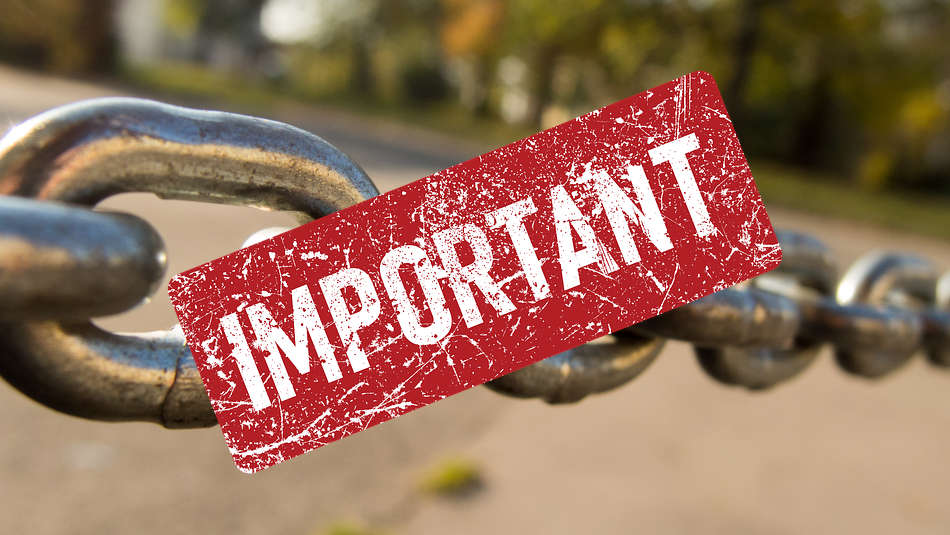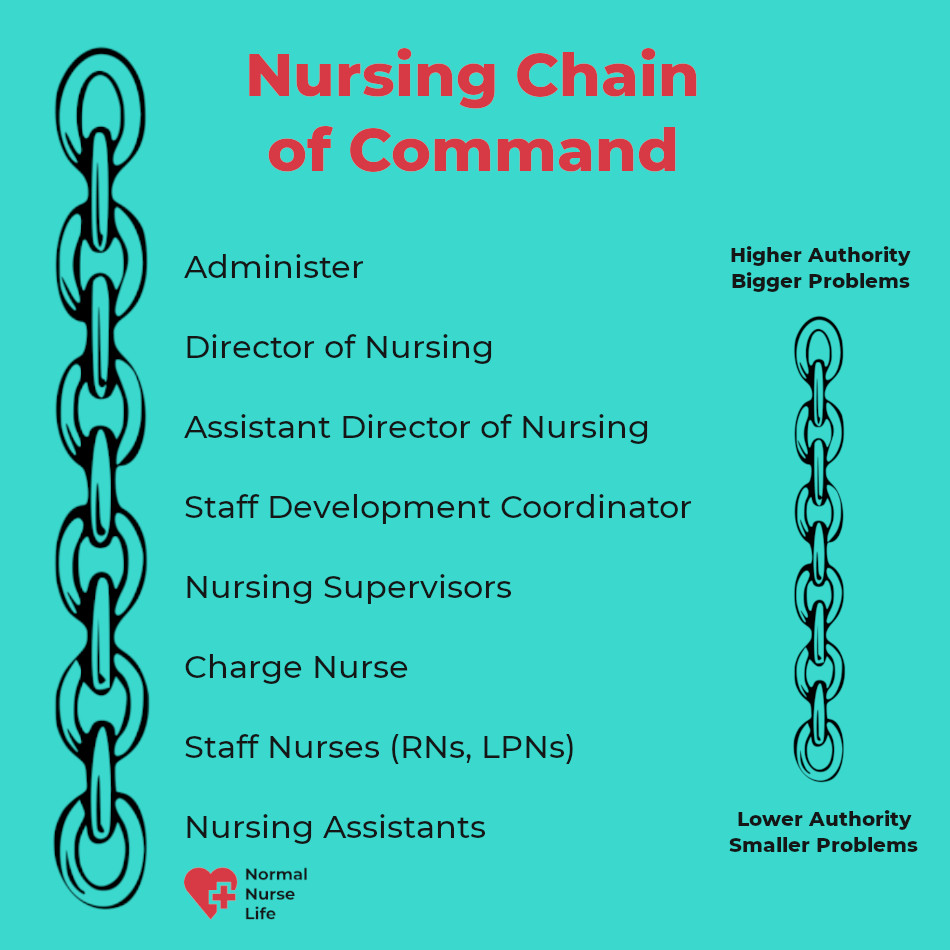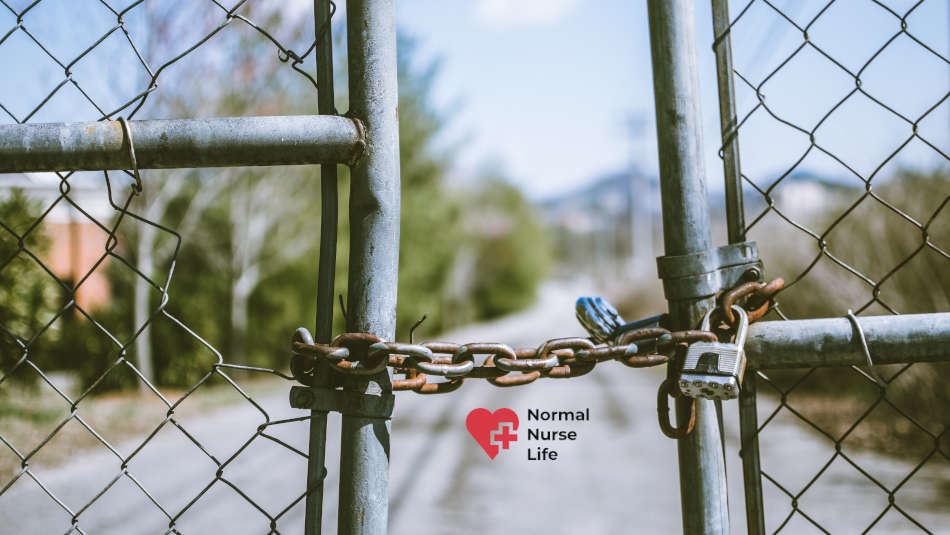Upon any adverse outcome or misdiagnosis in healthcare organizations, various issues can arise within the organization itself.
In such cases, bad communication between the caregivers is frequently the true cause instead of isolation errors made through a single practitioner.
In such claims, the allegations that non-physician personnel recognizes issues in care plan with access to the “nursing chain of command” in an effort for altering clinical course get included.
Here is a video for you where ProAssurance’s Senior Risk Resource Advisor Tina Reynolds describes the value of following the nursing chain of command.
After you’ve watched the video, we’ll get into more detail about the chain of command.
Unfortunately, the communication issues are not quite simple and these often get compounded with failure of getting involved in critical thinking and absence of flexibility while considering alternative explanations before reaching an original assessment.
With the continued exploration of such cases, having an interactive team with communication must be encouraged as it would be quite effective compared to the egocentric approach.
Ultimately all the essential care providers remain concerned regarding their obligation for the advocacy of patients.
In a few instances, there would be a need for resorting to the nursing chain of command.
However, even when the nursing chain of command gets initiated, the experience mostly indicates that most often it doesn’t prove as the ideal remedy.
Table of Contents
Chain of command for nursing
All hospitals indeed, around all organizations require a chain of command for operating.
In a lot of cases, the command chain in hospitals gets delineated with the chart, and it is commonly referred to as the organizational chart.
In the simplest definition, the chain of command for nursing can be said as the authority line and the responsibility along which the orders get passed within the department of the nursing, hospital, and between all other units.
Nurses ignoring the chain of command also lose their jobs and in certain situations, they might also lose their licenses to operate.
See also: Responsibility of a Nurse
There was an instance when a nurse failed to provide an emergency blood transfusion to a patient.
The nurse paged physicians a lot of times, without getting any response, and later on, the patient succumbed to the ailment.
The doctor got what amounted to one slap on the wrist while it was the nurse who lost her license to operate due to the failure of advocating the patient.
A few persons thought that the punishment was a lot more than just harsh, however, the failure of exhausting all the remedies for getting an order for performing transfusion is what led the Board of Registered Nursing to conclude that the failure for advocating the patient was a key factor in causing the patient’s death.
Now let’s suppose if she employed the nursing chain of command, she would have in all the likelihood, not been held accountable.
It was her failure to call and seek help from the charge nurse or the head nurse who was in a position for advancing to her request.
See also: What Are Registered Nurses Not Allowed to Do?
If she contacted and informed them of the situation promptly then they would have been in the position for using their authority, skills, and the power for getting appropriate patient care.
Next, let’s take a look at the nursing home chain of command, and after that, at the importance of the nursing chain of command.
Nursing home chain of command

The nurse that uses the chain of command can rightly protect them, the patient, and also the hospital.
The following steps can assure that the nurse exercises all advocacy muscles for the patient.
Firstly, she must call the charge nurse or the head nurse, who can make the best use of their position for accelerating quick response or can get the required authorization.
It must be remembered that with different hospitals you’ll have different variances on the nursing chain of command for your nursing duties.
Secondly, in case this fails, or if for any reason the charge nurse or head nurse isn’t available, then it is advised to look out for the Unit or the Department Director of Nursing (DON).
See also: Interview Questions for Assistant Director of Nursing
Normally, DONs have a working schedule of 9 to 5, yet they are asked for intervening at any required time.
See also: How Many Hours Do Nurses Work?
Thirdly, when the scenario requires a physician and the patient has been in jeopardy, it’s vital to properly know the use of the chain of command. Always remember that the Chief Nursing Officer (CNO) is the topmost advocate.
In different organizational structures, the CNO is typically directly beneath the administrator of the hospital and therefore, has quite a lot of authority for getting assistance in finding a positive solution for the issue.
When CNO isn’t responsive, then the best thing would be to contact the hospital administrator or medical director or the CEO.
See also: Interview Questions for Nursing Home Administrator
This depends on the seriousness of the problem.
The fourth step would be to always remember documenting the processes.
Suppose, if you’re having any trouble regarding appropriate authorization for administering medication or performing a procedure, you must be sure to notate this in the chart.
When it is necessary and seems appropriate, then you can also finish the report of an incident just as it has been defined in the procedures and policies of your hospital.
You must keep in mind that asking for help shouldn’t be considered a sign of weakness.
Far too often a lot of nurses think that asking for such types of assistance is making them lesser competent.
In such situations the nursing chain of command cannot be denied as a nursing chain of command truly helps nurses in solving and diffusing any difficult situation and this also helps in the protection of practice license of nurses if unfortunately, any negative result comes out.
The ability of a nurse to follow the nursing chain of command at the best also serves as a vital indicator of the complete state of nursing within a certain hospital.
Of course, a possible downside is present for using the nursing chain of command in a hospital.
Such downsides can mostly be possible when weak, poorly trained, and badly insecure managers are involved.
In a situation when the nurse requires help through the nursing chain of command and then she encounters apathy, resistance, or incompetence, the nurse can then rely on procedures and policies of the hospital regarding the appropriate protocols.
See also: How Can Nurses Influence Policy?
We might never know why the trained experienced nurses or other hospital employees seem to ignore pain cries.
When they felt helpless for providing assistance, did most of them seek out the next person in the chain of command?
Doing this isn’t simple, as this requires commitment with dedicated efforts.
However, nurses that remain in precarious situations must never outlook chain of command power with positive outcomes resulting through implementation.
Importance of chain of command in nursing

There is the significant importance of chain of command in nursing in different healthcare institutions.
Reasons as to why the managers have to follow the chain of command in a healthcare institution:
- The nursing chain of command is vital for standardizing communication process.
- With the nursing chain of command the best people are involved in their best performing duties.
- Supervisors are able to know tasks with people better compared to upper management.
- Supervisors have to know things that people do, so they’re efficiently able to manage the time.
General principles that a nurse must know and adhere to while following the chain of command whether practicing in ED or anywhere else are:
- Keep the clinically present in the area of practice.
- Avoid remaining silent in case the condition of the patient worsens.
- Always be certain to the institution with the nursing chain of command policies and if not, it’s vital to talk with CNO regarding development needs and also implementing the one at the earliest.
- Follow and know the nursing chain of command of the institution step after step.
- Accurately document and complete the attempts when you’re using the chain of command in the institution.
The chain of command is present from the military…
“The chain of command would be an authority line along with the responsibility of a nurse and with orders passed within the different nursing units.
Orders get transmitted down the nursing chain of command from higher-ranked nurses like nurse managers to the low ranked personnel that either carry out orders in the most personal manner and transmits this down the chain until this gets received by the ones expected to carry this out.”
Thus, the case is of topmost management to the downside.
Generally, in the military, the personnel provide orders only to those directly below them in the chain of command and they get orders from those who are directly above them.
Service members having difficulty can carry out orders and duty to appeal for providing relief directly to officer above the immediate commanders in the chain of command.
With the chain of command concept, it is also implied that the higher rank would alone not entitle higher-ranking service members for providing commands to people of the lower rank.
For example, the nurse from the ICU unit (for example) doesn’t directly command the low-ranking member of the unit “med surge”, and typically she is expected for approaching the charging unit of nurse “med surge” when she needs action through members of the unit.
See also: What Does ICU Stand For?
By the nursing chain of command, it would mean that the individual members can take orders through a superior and only provide orders for defining a group of people who are immediately below them.
Nursing chain of command chart
Here is a nursing chain of command chart for you.

If you find that helpful, please share it with your colleagues and friends on social media.
Conclusion: Nursing Chain of Command
Unfortunately, the rule never finds its way in the nursing area. In civilian management, the term can be described through a hierarchic authority structure.
See also: 5 Rights of Delegation in Nursing
The importance of chain of command in nursing cannot be denied as upon bypassing the chain of command, you tend to overlook essential things about the workplace while making calls leading to inconvenience and making people upset without any good cause.
If you want to learn some more nursing-related stuff, check out these articles of ours:
- 7 Ethical Principles in Nursing
- Top 10 Qualities of a Nurse with Explanations
- What Does LTAC Stand For?
- Nursing Symbols
- SMART Goals for Nursing With Examples
I’d be glad if you could give this article a star rating. Thank you in advance! 🙂
